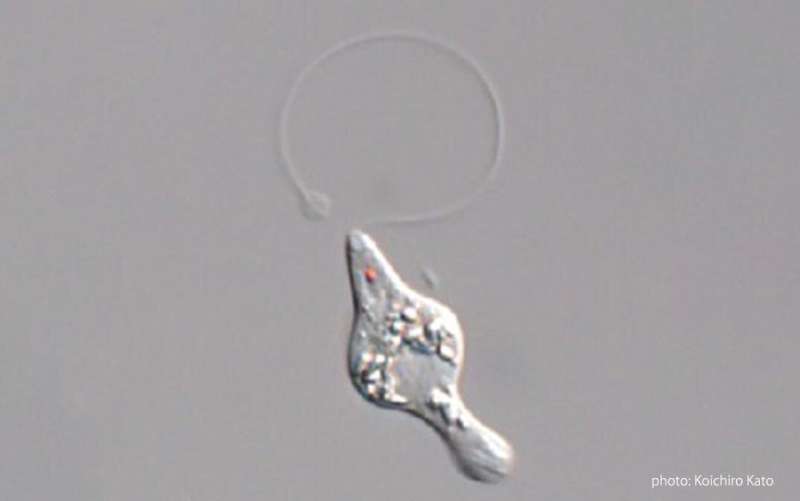Credit: University of Tsukuba
A detailed investigation has led to the discovery of a new species of parasitic euglenid found in ostracods and other creatures residing in rice fields. This euglenid has undergone a secondary loss of its photosynthetic capability. The infection rate of this parasite among rice-field animals is extremely high, and it is believed that this parasite can profoundly affect the ecosystem of these rice fields.
Euglenids are known for their diverse nutritional methods, including photosynthesis, bacterial predation, and in some cases, animal parasitism. However, the documentation of parasitic euglenids is sparse and outdated, with no reliable information on their ecology or taxonomy.
In the study, published in Protist, the researchers discovered flagellates within four animal species—including ostracods and rhabdocoels—collected from a rice field near the University of Tsukuba. These animals, which had flagellates in their bodies, died within days, indicating that the flagellate was a parasite. This flagellate displayed active metaboly without flagella inside the host body. However, upon leaving the host, it extended its flagella and began to swim. Using electron microscopy and other techniques, the team examined the morphology of this flagellate and determined that it exhibited euglenid characteristics.
In addition, DNA comparisons between flagellates isolated from all four animal species confirmed that they belonged to the same species. Phylogenetic analysis also revealed that this flagellate is a part of the photosynthetic euglenid group, suggesting that the flagellate lost its photosynthetic ability in the course of evolution to become an animal parasite. Comparing this to other previously reported parasitic euglenid flagellates, the researchers deduced that the discovery is a new species. They have named it Euglenaformis parasitica (Japanese name: Tsukuba-yadori-midorimushi).
More information: Koichiro Kato et al, Taxonomy of a New Parasitic Euglenid, Euglenaformis parasitica sp. nov. (Euglenales, Euglenaceae) in Ostracods and Rhabdocoels, Protist (2023). DOI: 10.1016/j.protis.2023.125967
Provided by University of Tsukuba
























